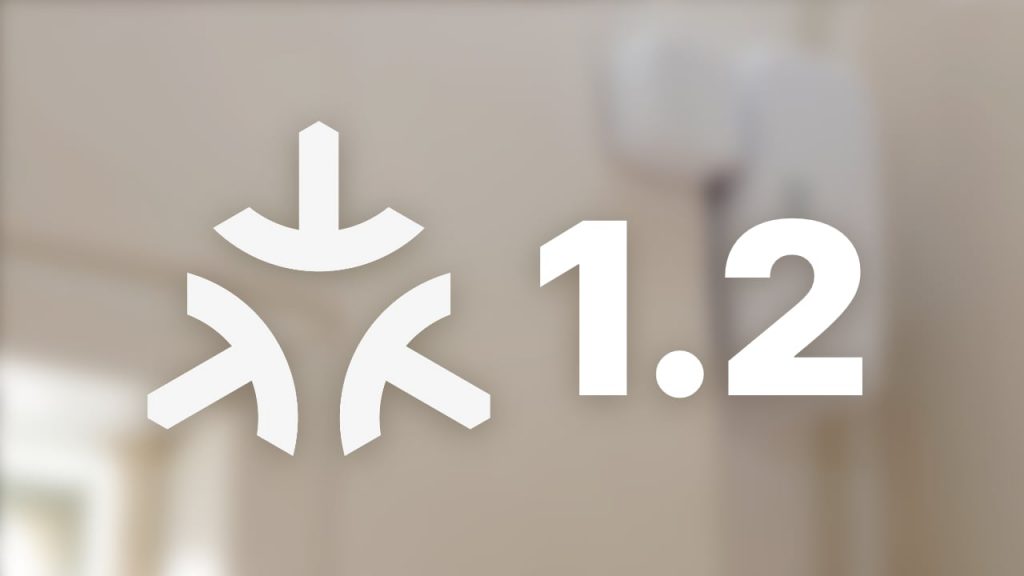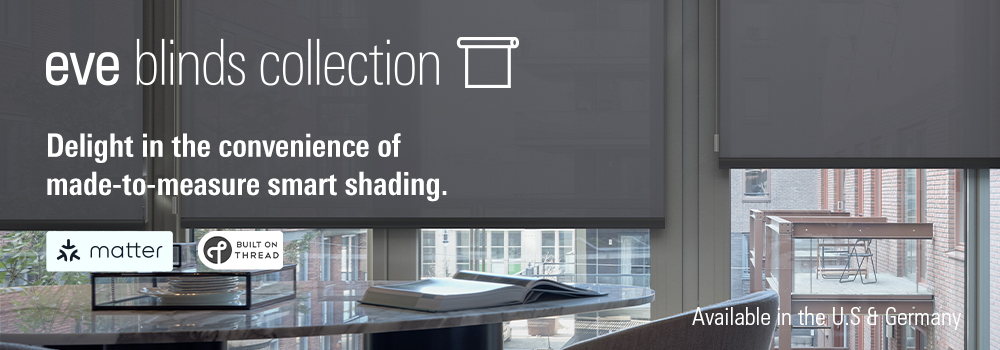The Matter smart home standard continues to evolve. In its six-month cycle of new and expanded Matter specifications, the Connectivity Standards Alliance (CSA) has just released version 1.2 (link). While the previous version 1.1 in May mainly contained detail improvements, this time also new product categories are included. Nine device categories are added to the ones supported so far.
Extension by 9 device types
- Refrigerators: With Matter 1.2, temperature can be controlled and monitored – on classic refrigerators and freezers as well as on special wine coolers or appliances with a “kimchi” compartment popular in Korea. Among the first vendors to make use of the add-on is the German BSH Group (Bosch, Siemens, Gaggenau and others) with its “Home Connect” feature. When asked, the company confirmed: “Refrigerators will be the first BSH product category to comply with the new standard. Bosch and Siemens appliances of the XXL built-in refrigerator and freezer combination are expected to get a Matter update in the course of the next year,” Stefanie Lipps, managing director of Home Connect GmbH, told matter-smarthome.de.
- Dishwashers: In addition to basic functions such as remote start and progress notifications, alarms are supported. For example, devices can indicate when the water supply and drain are disrupted or the door is not closed properly.
- Laundry Washers: Matter-enabled machines transmit messages about progress, such as when the end of the wash program is reached. However, tumble dryers will only be supported in an upcoming version.
- Air Purifier: This device type relies on other Matter categories to measure air purity (air quality sensor) and control the fan speed (fan). Models with heating function may also include temperature control (thermostat). In addition, the filter condition is detected and reported. Matter 1.2 takes into account both HEPA and activated carbon filters.
- Room Air Conditioners: In addition to the previous thermostats and HVAC devices, version 1.2 also includes stand-alone air conditioners. For example, monobloc models can be controlled in temperature and fan speed.
- Robot Vacuum Cleaner: Remote start and a progress notification are pretty much self-evident. Beyond that, however, Matter can also handle the two operating modes dry vacuuming and wet mopping. The standard transmits the most important status information, such as charging status, brush status and error reports. The manufacturer SwitchBot told the German technology magazine Heise Online that it wants to make its vacuuming and mopping robot S10 fit for Matter with a firmware update (link). So far, a date for this is not yet known.
- Fans: With Matter 1.2, fans can be certified as a separate device type for the first time. This is associated with new functions such as oscillating operation or the simulation of natural wind. In addition, the direction of the airflow can be reversed from forward to backward and the fan speed can be changed step by step.
- Air Quality Sensors: The latest version of the standard knows and transmits values for ten different air quality measurements: Particulate Matter (PM1, PM2.5, PM10), Carbon Dioxide (CO2), Carbon Monoxide (CO), Nitrogen Oxide (NO2), Volatile Organic Compounds (VOC), Formaldehyde, Ozone, and Radon. In addition, air cleaners can provide so-called AQI data (Air Quality Index), which providers make available for the device’s location. This paves the way for Matter-compatible air quality sensors. Eve Systems has announced a corresponding update for its Eve Room in the Thread version for quite some time and sticks to this statement when asked. However, considering the various factors that can affect the Matter roadmap, the company would rather not name a date for it.
- Smoke and Carbon Monoxide Alarms: Products for smoke or carbon monoxide alarm can now be integrated into Matter systems. They can perform automatic self-tests and communicate their battery status.
Detail improvements
The first major update in the Matter standard is not limited to new device categories. As with the spring 1.1 release, the developers involved have been working on the technology in the background. For example, the test tool (Test Harness) was revised, which manufacturers can use to check whether they comply with all specifications before certification. As we all know, among the most common criticisms are problems that only become apparent in daily use and interaction with many different devices.
According to the Connectvity Standards Alliance, there are also improvements to the specifications themselves. Among the most important, the CSA says:
- Latch locks: For European markets, an additional locking state has been included in the specifications, which does not exist on American deadbolt locks. In particular, the Austrian manufacturer Nuki had advoated for this.
- Device Appearance: In Matter, colors and surfaces of devices can now be defined, which improves the display on the screen and should make it easier to distinguish between several similar products.
- Device Composition: On luminaires consisting of multiple light sources, or also switches with multiple units, end points can be hierarchically structured and grouped together – for a better overview and easier control.
- Semantic Tags: To make appearance and operation look more consistent across different platforms, there are Semantic Tags. For example, they describe the position and function of buttons on a remote control with multiple buttons.
- Generic State Descriptions: Operating states of devices can be given a generic description in Matter 1.2. This should facilitate the creation of new device types in future Matter versions and ensure their basic support across various platforms.
The new release lays the foundation for a further expansion of the Matter standard. How quickly this takes place is up to the companies. The innovations will only gradually be reflected in devices. So far, not even all products announced for the first impact last year are available on the market. But as of now, vendors can incorporate the improvements and new device types into their software. The technical prerequisites are in place – not least because every Matter-certified product has to be update-capable.
Share this information:


